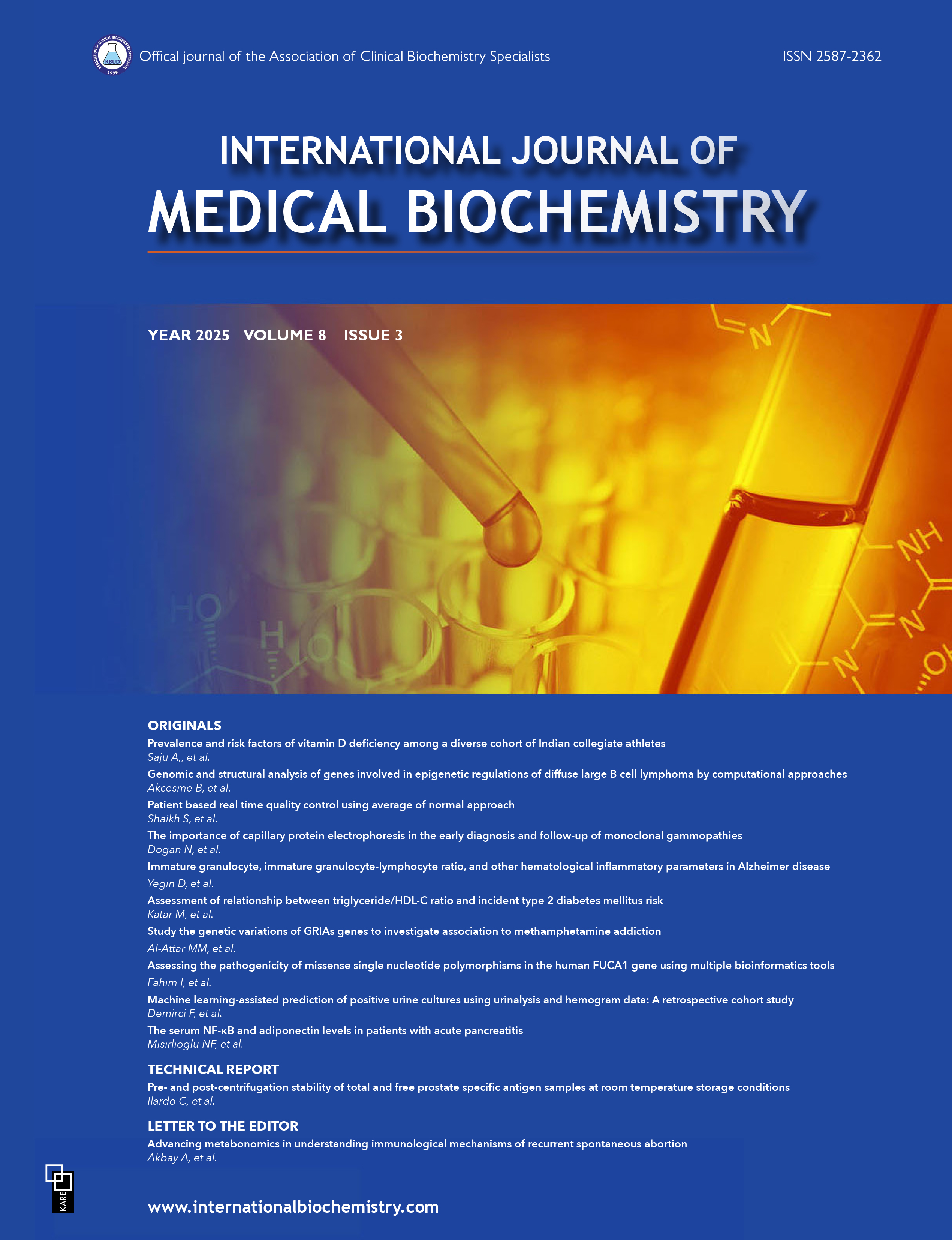Laboratory findings in predicting intensive care need and death of COVID-19 patients
Merve Sena Odabaşı1, Güven Ozkaya2, Erdinç Serin1, Anıl Akkuş1, Pınar Yılmaz1, İsmet Sayan31Department of Biochemistry, Ministry of Health Istanbul Şişli Hamidiye Etfal Training and Research Hospital, İstanbul, Turkey2Department of Biostatistic, Uludag University Faculty of Medicine, Bursa, Turkey
3Department of Anesthesia and Reanimation, Ministry of Health Istanbul Şişli Hamidiye Etfal Training and Research Hospital, İstanbul, Turkey
INTRODUCTION: The ability to predict the course of COVID-19 is very valuable in terms of the optimal use of health resources. The aim of this study was to examine the value of biochemical and hematological parameters in the estimation of hospital stay, disease severity, and likelihood of death.
METHODS: Routine blood analysis data of confirmed COVID-19 cases (n=222) were collected and analyzed. The patients were divided into 3 groups: outpatient, inpatient, and patients requiring intensive care.
RESULTS: There were significant differences between the 3 groups in terms of age, lymphocyte, neutrophil, hemoglobin, hematocrit, mean corpuscular volume (MCV), red blood cell distribution width (RDW), neutrophil-to-lymphocyte ratio (NLR), neutrophil-to-monocyte ratio (NMR), platelet-to-lymphocyte ratio (PLR), procalcitonin, C-reactive protein (CRP), and D-dimer values. Univariate analysis for mortality revealed significant differences in neutrophil, NLR, PLR, NMR, procalcitonin, and CRP values. Multivariable logistic regression yielded significant differences in only NMR and procalcitonin values. A positive correlation was determined between the length of hospital stay and age, MPV, procalcitonin, and D-dimer values.
DISCUSSION AND CONCLUSION: The neutrophil count was the most appropriate parameter to predict the need for intensive care (area under the curve: 0.782, sensitivity: 73%, specificity: 75%, with a cutoff of 4.43). The NMR and procalcitonin values were significant to predict death in multivariate analysis. Age, CRP, and D-dimer values were the parameters most associated with the duration of hospitalization.
Manuscript Language: English






